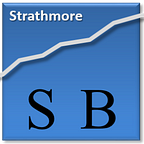How a lack of basic market research almost bankrupted Jane’s grocery store
What comes to your mind when you hear the word marketing? For many marketing simply means advertising. But this is a very narrow view.
Marketing is a lot more. In fact, advertising forms only a very small part of it. Marketing science is first and foremost about conducting market research and making conclusions necessary to define a company’s strategy. It is about defining your target market, grasping its size and understanding its needs. Only then can you address the ways to promote your products or services to this particular segment. Without a clear and accurate understanding of your target market, you won’t be able to set an optimum strategy and your marketing budget will mostly be wasted.
Market research can be as complicated or as simple as you can afford. Even simply watching of your competitors can bring you far and give you a common-sense understanding about the feasibility of your idea. Let us take the real-life example of Jane’s Grocery and the miscalculated venture into bank agency
Jane ran a grocery store and planned to become a bank agent for Equity Bank. She didn’t have the necessary cash for the float and borrowed KES 200,000 from her MFI without much thinking. Her main reason in believing it would be profitable was “A store on the neighbouring street offers it and I constantly see clients coming and going. It must be a great business.” Her second reason was “It generates KES 10 per client. No costs, pure profit. It can’t be loss-making.”
Size of the market
The need for the bank agency services might very well be there; however, the crucial question is how big this need is. It could be that there are enough clients in the area for only one agent to be profitable (a so-called ‘natural monopoly’ in economists’ language). Jane would simply need to spend some time opposite her neighbouring competitor and count the customers going in and out. Opening a second agency in close vicinity is not going to increase the market, it will halve it. Now two agents will be serving the same pool of customers. Is this half enough to cover the costs, let alone earn a profit?
Underestimating costs
The second mistake was to assume that a commission is pure profit. Even if there are synergies (e.g. she doesn’t need to rent space for the bank agency, she already does it for the grocery shop), other costs must still be allocated. Transactions won’t happen on their own. An employee will need to spend time handling customers. Jane’s best-case assumption was 80 clients a day. Even if the employee spends 5 min on each, it is over 6 hours of uninterrupted work. That pretty much means, the employee has no time to do the selling in the grocery store any more and so Jane would need to hire a second employee. Out of the forecasted monthly revenue of KES 20,000 (with 25 working days a month) Jane must deduct the cost of an employee’s salary. The cheapest would probably cost her KES 12,000.
Borrowing costs
A second big cost is the interest on the loan. Recall that she didn’t have the capital for the float and needed to borrow money. Having borrowed KES 200,000, the obligation was to repay KES 19,000 per month for a year. Without going too deep into financial mathematics we can roughly say that in each instalment KES 2,000 was interest and KES 17,000 constituted principal repayment. Why is it important to split? Because interest is your cost, principal is not. Now add KES 2,000 interest to the cost of doing bank agent business. She already remains with KES 6,000 profit a month. That is if her assumptions of 80 clients a day come true. She needs min 56 a day to break even.
Breaking even
The third question is if she can meet the cash flow. Now we come back to the principal part of the loan. To meet the cashflow needs, she will need 124 clients a day, what, with 5 minutes per client, already translates into over 10 hours uninterrupted work without pausing to go to the toilet. So she will probably need to hire two employees and get two bank machines and two floats.
The sad result was that after 3 months Jane was only getting about 5 clients per month! She kept afloat by using all her profit from the grocery shop to repay the loan. She was lucky enough to have an employed husband who was supporting the household. Otherwise she would have ended up in bankruptcy. All this could have been avoided, had she done her market research. It would have definitely shown her that neither 120, nor 80, nor 50 clients a day were feasible.
